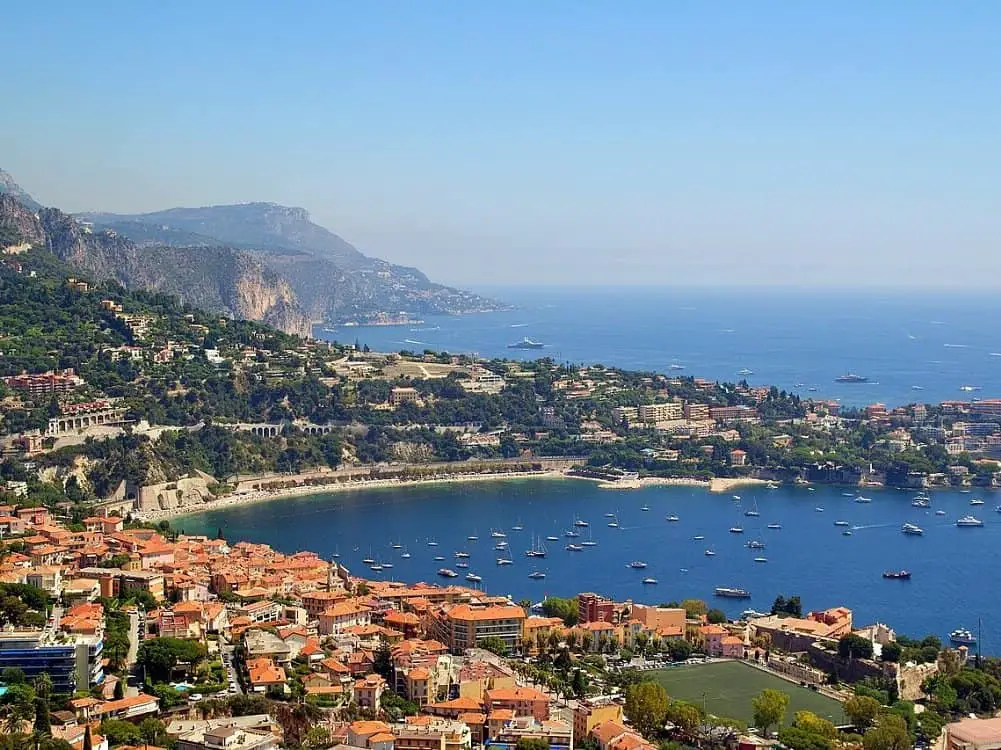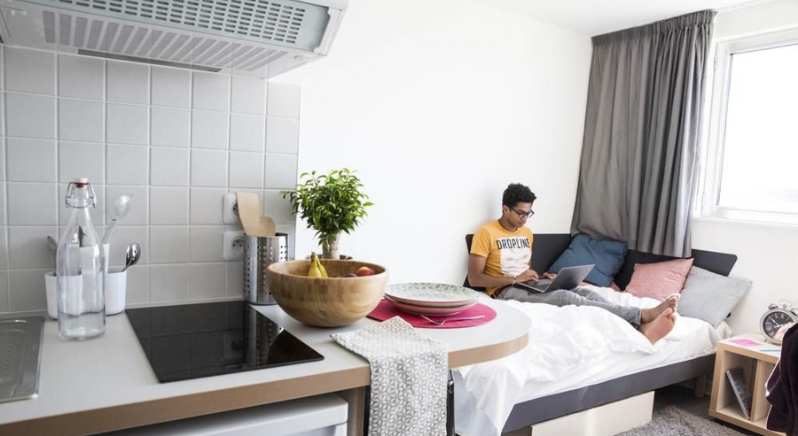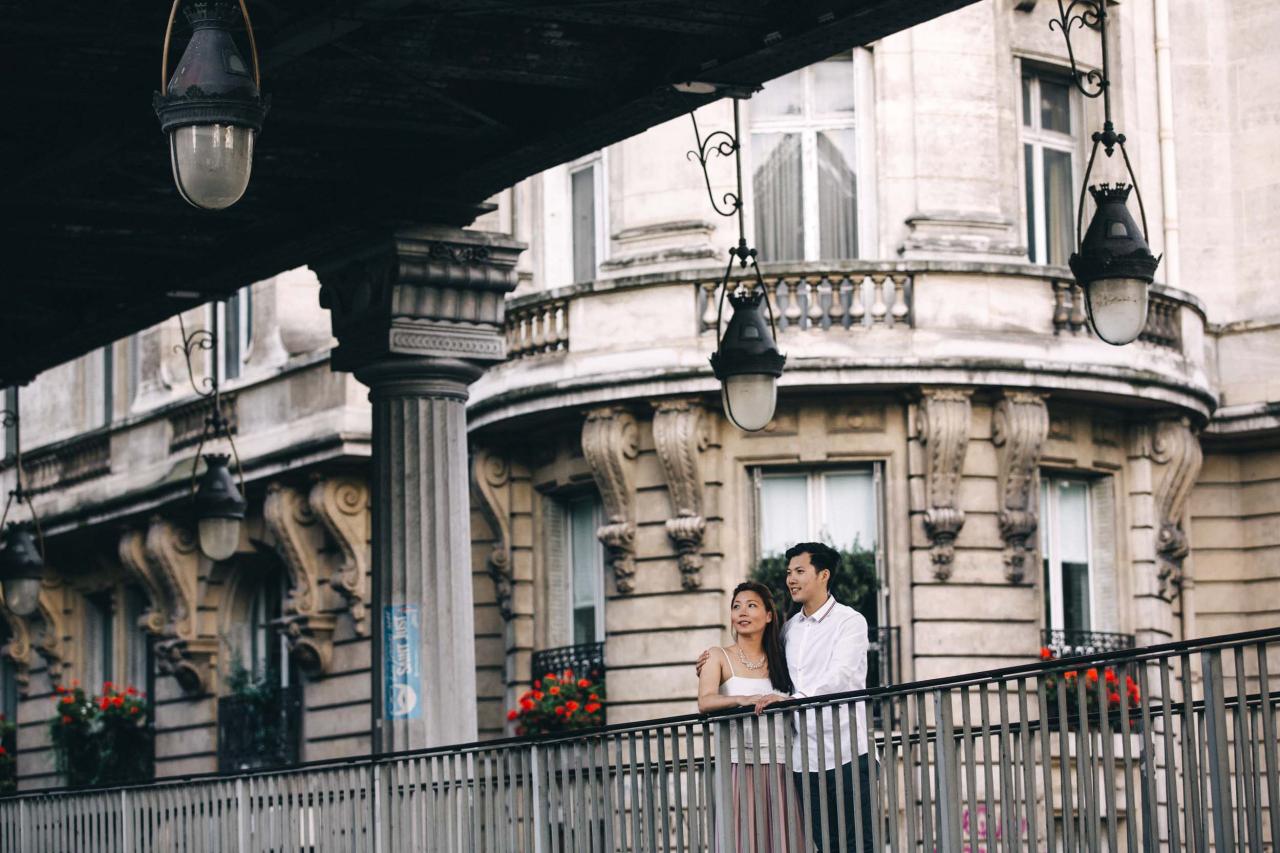Best off-the-beaten-path restaurants in Paris offer a unique culinary adventure beyond the typical tourist traps. These hidden gems often showcase local specialties, unique preparation methods, and intimate atmospheres, providing a taste of authentic Parisian life. From charming bistros to cozy cafes, these establishments provide a more immersive experience, distinct from the often-crowded, mainstream options.
This exploration dives deep into the vibrant world of Parisian off-the-beaten-path dining, revealing hidden culinary treasures and local favorites. We’ll examine specific neighborhoods known for their unique culinary offerings, exploring the stories behind the dishes and the restaurants themselves. The guide also provides practical tips for diners, including reservation strategies, transportation options, and navigating the local area.
Introduction to Off-the-Beaten-Path Dining in Paris
Off-the-beaten-path restaurants in Paris represent a departure from the typical tourist hotspots, offering a more authentic and often more affordable culinary experience. These establishments, often tucked away in less-trafficked neighborhoods, showcase the diverse culinary landscape of the city beyond the familiar tourist trails. They frequently feature local ingredients and traditional techniques, offering a glimpse into Parisian life outside the spotlight.These unique eateries stand out from mainstream restaurants by prioritizing local ingredients, regional specialties, and traditional cooking methods.
They typically focus on a smaller, more intimate setting, fostering a more personal and immersive dining experience. This often translates to a lower price point, making them accessible to a broader range of diners.
Defining Characteristics of Off-the-Beaten-Path Restaurants
These restaurants are characterized by a commitment to authenticity. They frequently utilize locally sourced ingredients, offering a taste of the region’s culinary heritage. Often, these restaurants are smaller, family-run businesses, with an emphasis on traditional techniques and a slower pace. The ambiance is frequently more intimate and local, contrasting with the bustling atmosphere of tourist-oriented restaurants.
Historical Context and Trends
The evolution of off-the-beaten-path dining in Paris reflects broader trends in food culture. The rise of interest in local and regional cuisine, along with a desire for unique culinary experiences, has fueled the growth of these restaurants. For example, the increasing popularity of “bistros” and “brasseries” in the past decade has led to a demand for establishments that showcase local culinary traditions.
This trend mirrors a global movement toward supporting small, independent businesses and exploring less-commercialized areas.
Types of Cuisine
Paris’s off-the-beaten-path restaurants showcase a wide variety of cuisines, from traditional French regional dishes to international flavors. Many restaurants highlight specific neighborhoods’ specialties, highlighting the rich diversity of the city’s culinary heritage. Expect to encounter a broad spectrum of French cuisine, from the classic dishes of Normandy to the more modern interpretations of Provençal flavors. There is also a growing presence of restaurants specializing in international cuisines, catering to the diverse population of Paris.
Price Range Comparison
| Restaurant Type | Approximate Price Range (per person) |
|---|---|
| Traditional French Bistro (Regional Specialties) | €25-€45 |
| Hidden Gem, Focused on Local Produce | €20-€35 |
| Modern, Artisanal Restaurant (Fine Dining, Less Touristy) | €40-€70 |
| Ethnic Restaurants (Hidden Gems) | €15-€30 |
Note: Prices are estimates and can vary based on specific choices, portion sizes, and the level of service offered.
Identifying Key Locations and Neighborhoods: Best Off-the-beaten-path Restaurants In Paris
Beyond the iconic landmarks and tourist traps, Paris boasts a wealth of hidden culinary gems nestled in less-trafficked neighborhoods. These areas often showcase a more authentic Parisian experience, with restaurants reflecting local tastes and traditions. Exploring these off-the-beaten-path destinations allows diners to discover unique flavors and experiences.
Neighborhoods for Off-the-Beaten-Path Dining
These neighborhoods, often characterized by their local character and proximity to historical sites, are fertile ground for discovering exceptional dining experiences. They offer a contrast to the tourist-heavy areas, presenting a more genuine portrayal of Parisian life.
- The Marais district, known for its trendy boutiques and historical charm, offers a diverse culinary scene, ranging from sophisticated French bistros to innovative, globally-inspired restaurants. Its rich history and diverse population contribute to the unique culinary tapestry.
- The Belleville district, with its vibrant atmosphere and strong ethnic influences, provides a fantastic opportunity to taste global cuisines, from authentic Moroccan tagines to delicious Vietnamese pho. The area’s multicultural heritage is reflected in its diverse culinary scene.
- The Canal Saint-Martin area, a trendy neighborhood with a burgeoning arts and culture scene, houses a selection of modern restaurants that blend contemporary styles with traditional French techniques. The neighborhood’s stylish ambiance adds to the experience.
- The Latin Quarter, while a historic area, also offers a range of off-the-beaten-path culinary options beyond the standard tourist fare. Students and locals frequent this area, contributing to a unique and vibrant culinary environment.
Culinary Specialties and Attractions
The unique culinary offerings in these neighborhoods are often directly linked to the area’s historical background, ethnic diversity, or proximity to specific industries. For instance, Belleville’s large immigrant population from North Africa has led to a significant number of Moroccan and other international restaurants.
| Neighborhood | Culinary Specialties | Nearby Attractions |
|---|---|---|
| Marais | Modern French cuisine, innovative dishes, globally-inspired restaurants | Place des Vosges, Picasso Museum, historic synagogues |
| Belleville | Moroccan tagines, Vietnamese pho, international cuisine reflecting the area’s multiculturalism | Parc de Belleville, Belleville Market, local markets |
| Canal Saint-Martin | Contemporary French cuisine, trendy restaurants, modern bistros | Canal Saint-Martin, Canal des Arts, trendy boutiques |
| Latin Quarter | Traditional French bistro fare, diverse options catering to students and locals | Sorbonne University, Pantheon, Luxembourg Gardens |
Exploring Culinary Specialties and Experiences

Beyond the well-trodden tourist paths of Paris lies a vibrant tapestry of culinary experiences waiting to be discovered. Off-the-beaten-path restaurants often showcase unique culinary traditions, offering a taste of Parisian life beyond the typical Parisian bistro. These establishments are a testament to the city’s diverse and evolving gastronomic landscape.Off-the-beaten-path dining in Paris allows for an immersion into regional and international flavours.
From hidden gems tucked away in charming neighborhoods to intimate family-run restaurants, these eateries often feature authentic recipes passed down through generations. The unique preparation methods and ingredients used in these establishments offer a distinct perspective on French cuisine, revealing its rich history and global influences.
Diverse Cuisines in Off-the-Beaten-Path Paris
Paris’s off-the-beaten-path restaurants boast a remarkable range of culinary traditions. From the subtle nuances of Moroccan tagines to the robust flavours of Vietnamese pho, these establishments cater to diverse palates. Expect to find a mix of familiar and unexpected cuisines, all meticulously crafted by talented chefs.
Unique Preparation Methods and Ingredients, Best off-the-beaten-path restaurants in Paris
Many off-the-beaten-path restaurants emphasize traditional preparation methods, showcasing the art of French culinary heritage. The use of locally sourced, seasonal ingredients is a hallmark of these establishments. These practices often involve slow-cooking techniques, meticulous ingredient selection, and a focus on regional specialties. For example, a restaurant in Belleville might feature a unique take on French onion soup, using a blend of local herbs and a slow-cooked caramelization technique.
Stories Behind the Dishes
The dishes served in these restaurants often carry stories of their origin and evolution. These tales reflect the migration of cultures and the fusion of culinary traditions within Parisian society. A restaurant in the Marais district might feature a dish inspired by the Jewish culinary heritage of the area, showcasing the historical exchange of culinary ideas.
Comparative Culinary Experiences
The culinary experiences offered by restaurants in different neighborhoods vary significantly. A restaurant in the Belleville neighborhood might offer a more modern, vibrant take on Vietnamese cuisine, while a hidden gem in the Latin Quarter could feature a traditional French-inspired meal. The ambiance, service, and overall experience contribute to the unique character of each establishment. These differences in style and approach reflect the diverse character of Parisian neighborhoods.
Restaurant Listing by Neighborhood
| Neighborhood | Cuisine Type | Unique Experience |
|---|---|---|
| Belleville | Vietnamese Fusion | Modern take on Vietnamese classics, using fresh, local ingredients in a lively atmosphere. |
| Marais | Jewish-French Fusion | A unique blend of traditional Jewish and French dishes, showcasing the historical exchange of culinary ideas in the area. |
| Latin Quarter | Traditional French with Modern Twist | Authentic French dishes prepared with a modern touch, emphasizing fresh, seasonal ingredients and traditional cooking techniques. |
| Canal Saint-Martin | Mediterranean Inspired | A sophisticated approach to Mediterranean cuisine, showcasing a range of fresh seafood and vibrant flavors. |
Restaurant Recommendations and Selection Criteria
Unveiling Paris’ hidden culinary gems requires careful consideration beyond simply browsing online reviews. A discerning approach to restaurant selection ensures an authentic and unforgettable dining experience, tailored to individual preferences. This section explores crucial factors for choosing the perfect off-the-beaten-path restaurant in the city.Selecting a restaurant should go beyond just popularity. Understanding the nuances of neighborhood reputations and culinary specializations, along with personal preferences, is key to a satisfying experience.
Consideration of dietary needs and the restaurant’s ambiance further refines the selection process, ultimately leading to a truly personalized dining adventure.
Factors for Choosing an Off-the-Beaten-Path Restaurant
Selecting the ideal off-the-beaten-path restaurant hinges on several factors beyond basic popularity. Understanding local reputations and culinary specializations is essential.
- Neighborhood Reputation: Different neighborhoods boast distinct culinary reputations. Researching the neighborhood’s unique culinary offerings and popular eateries can illuminate the area’s character and expected quality of dining experiences. For example, the Marais district might offer a blend of contemporary and traditional French cuisine, while the Belleville district might specialize in diverse international flavors.
- Culinary Specializations: Focusing on specific culinary specializations, such as regional French cuisine, can yield a unique dining experience. Delving into the restaurant’s menu and any specific culinary traditions associated with the neighborhood will offer insight into the experience.
- Restaurant Ambiance: The atmosphere of the restaurant plays a significant role in the overall experience. A cozy, intimate setting might be perfect for a romantic dinner, while a lively, bustling atmosphere might suit a group gathering. Considering the ambiance in advance will ensure the restaurant aligns with the desired mood.
Criteria for Restaurants Based on Dietary Preferences/Restrictions
Dietary preferences and restrictions are critical considerations. Choosing a restaurant that accommodates these needs ensures a comfortable and enjoyable dining experience.
- Dietary Preferences: A restaurant’s ability to cater to specific dietary preferences, like vegetarian, vegan, or gluten-free options, is essential. Checking menus online or contacting the restaurant directly to inquire about these options is crucial. This preemptive approach ensures a pleasant and satisfying dining experience.
- Dietary Restrictions: Understanding any allergies or specific dietary restrictions is equally important. Clear communication with the restaurant about dietary limitations will help ensure a safe and enjoyable dining experience.
Importance of Ambiance and Atmosphere
The ambiance and atmosphere of a restaurant contribute significantly to the overall dining experience. A thoughtfully chosen atmosphere enhances the enjoyment of the meal.
- Intimate vs. Lively: Consider whether an intimate or lively atmosphere aligns with the desired experience. A quiet, intimate setting might be suitable for a romantic dinner, while a lively atmosphere might be more appropriate for a group gathering or celebration.
- Decor and Music: The restaurant’s decor and music can contribute significantly to the ambiance. Consider whether the chosen aesthetic and soundscape complement the overall dining experience. For example, a traditional French bistro might have a classic decor and subdued background music, while a modern, contemporary restaurant might have a minimalist design and upbeat jazz music.
Comparing Restaurant Reputations Within Neighborhoods
Understanding the reputation of restaurants within a given neighborhood is vital. Researching reviews and comparing offerings can assist in making informed decisions.
- Review Aggregation: Leveraging review aggregators and online platforms can provide valuable insights into the restaurant’s reputation. Comparing ratings and reviews can help identify restaurants that consistently receive positive feedback.
- Local Recommendations: Seeking recommendations from locals or people familiar with the neighborhood can offer invaluable insights into restaurants with strong reputations and hidden gems.
Top Restaurant Recommendations
This table presents top recommendations, their addresses, and brief summaries of their specialties and atmosphere.
| Restaurant Name | Address | Specialties | Atmosphere |
|---|---|---|---|
| Le Bouillon Chartier | 2 Rue du Faubourg Montmartre, 75009 Paris | Traditional French bistro fare, large portions | Lively, bustling, classic Parisian atmosphere |
| Le Coupe-Chou | 11 Rue du Cherche-Midi, 75006 Paris | Modern French cuisine with seasonal ingredients | Intimate, elegant, stylish |
| Le Train Bleu | Gare de Lyon, 75012 Paris | Fine dining, upscale ambiance | Sophisticated, high-end, formal |
Practical Considerations for Diners
Navigating the Parisian culinary scene beyond the tourist hotspots requires a bit of planning. This section details key practicalities for enjoying a memorable meal at these off-the-beaten-path gems. From securing reservations to understanding transportation, we’ll cover the essential steps to a smooth and enjoyable dining experience.
Paris has some amazing hidden gems for dining. Finding those truly unique off-the-beaten-path restaurants is key. For example, the food in these places often reflects a unique approach to cooking, showcasing regional specialties and local ingredients. Interestingly, the nutritional benefits of certain fruits can significantly impact hair health, even helping prevent hair loss. Check out this helpful article on the influence of fruits on hair health and preventing hair loss for more information.
Ultimately, these hidden culinary treasures are well worth the effort to discover, and provide a taste of Paris’ diverse culinary landscape.
Reservation Strategies
Reservations at sought-after Parisian restaurants are crucial, especially for off-the-beaten-path establishments. Directly contacting the restaurant via phone or email, often found on their website, is typically the most reliable method. Online reservation platforms, such as OpenTable or local reservation sites, can also be effective. Be prepared to make reservations well in advance, especially for popular restaurants or during peak seasons.
Confirming the reservation details, including date, time, and number of guests, is paramount to avoiding any misunderstandings.
Transportation Options
Paris boasts an extensive public transportation system, making it relatively easy to reach most neighborhoods. The metro is the most efficient option, with many restaurants located within a short ride of a station. Consider using a dedicated metro map, or a mobile app like the RATP app, to plan your route and identify the closest station. Walking is also a viable option for certain restaurants, particularly in more pedestrian-friendly neighborhoods, but be mindful of the distances and any potential challenges during peak hours or in unfamiliar areas.
Taxis and ride-sharing services are available but may not be as economical as public transportation.
Navigating the Local Area
Familiarizing yourself with the local area is key to a stress-free dining experience. Use a map or online navigation tools to identify the specific location of the restaurant. Check for any nearby landmarks or street names that can serve as visual cues. Knowing the local area beforehand can also help you identify nearby shops, cafes, or attractions for pre- or post-dinner activities.
Language Considerations
While many Parisians speak some English, especially in tourist areas, it’s advisable to have a basic understanding of French phrases, particularly for ordering food or asking for directions. Simple phrases like “Bonjour,” “Merci,” and “Excusez-moi” can go a long way. Consider downloading a translation app or learning a few essential phrases before your visit. Many restaurants have menus in English, but this isn’t always guaranteed.
Average Meal Prices and Variations
Average meal prices at off-the-beaten-path restaurants in Paris vary significantly, depending on the type of cuisine, the restaurant’s reputation, and the occasion. A simple lunch might range from €15 to €30, while a more elaborate dinner could cost €40 to €80 per person. Expect higher prices for restaurants in more exclusive neighborhoods or those known for their unique culinary experiences.
Restaurant Practical Information
| Restaurant Name | Opening Hours | Address | Reservation Information |
|---|---|---|---|
| Le Bouillon Chartier | Mon-Sun 11:00-14:00, 18:00-22:00 | 7 Rue du Faubourg-Montmartre, 75009 Paris | Reservations highly recommended, available online or by phone. |
| Le Coupe-Chou | Mon-Sun 12:00-15:00, 19:00-23:00 | 3 Rue du Cherche-Midi, 75006 Paris | Reservations accepted via phone or online platforms. |
| Le Petit Prince | Mon-Sun 12:00-14:30, 19:00-22:00 | 14 Rue de l’Abbaye, 75006 Paris | Reservations recommended, available online or via phone. |
Restaurant Ambiance and Atmosphere

Off-the-beaten-path restaurants in Paris often offer a unique and captivating atmosphere that complements the culinary experience. Beyond the food, these establishments create an environment that transports diners to a specific time or place, often steeped in local charm and character. Understanding the ambiance is crucial for selecting the right restaurant, as it significantly impacts the overall enjoyment of the meal.The ambiance of an off-the-beaten-path restaurant in Paris is often a carefully crafted blend of design elements, musical selections, and attentive service.
These aspects work together to set the stage for a memorable dining experience. The restaurant’s interior design, whether it’s a dimly lit bistro or a bustling wine bar, significantly influences the overall feeling. Likewise, carefully chosen music and the manner in which staff interact with patrons contribute to the overall ambiance.
Interior Design and Local Charm
Interior design plays a pivotal role in creating the ambiance of a restaurant. A restaurant reflecting the local character often employs décor that evokes a sense of history or neighborhood charm. This might include antique furnishings, exposed brick walls, or artwork featuring local scenes. The use of natural light and the careful arrangement of seating can also enhance the atmosphere.
A restaurant in a historic building, for example, might utilize original architectural details to create a unique and captivating space.
Music and Atmosphere
Music selection is a crucial element in setting the tone of a restaurant. A lively jazz club might feature live music, while a more intimate bistro might play soft, ambient tunes. The type of music should complement the overall atmosphere and not overwhelm the dining experience. The volume level is equally important, ensuring that conversations are not drowned out and that diners can appreciate both the music and the company.
Service and Personalization
Attentive service is a hallmark of a well-executed restaurant experience. Off-the-beaten-path establishments frequently prioritize personalized service, ensuring that each guest feels valued and well-taken care of. This can manifest in small gestures, such as recommendations based on guest preferences, or prompt and efficient table management. The overall interaction with the staff can significantly impact the perceived atmosphere and level of comfort.
Casual vs. Fine Dining Ambiance
The atmosphere differs considerably between casual and fine dining experiences. Casual restaurants often embrace a relaxed, convivial atmosphere, encouraging interaction and conversation. They typically feature simpler décor, comfortable seating, and a more informal service style. In contrast, fine dining establishments often prioritize a more sophisticated and elegant ambiance, with elaborate décor, exquisite lighting, and attentive service to enhance the refined dining experience.
A Unique Example: Le Bouillon Chartier
Imagine a bustling, historic Parisian restaurant, Le Bouillon Chartier. The restaurant, a popular destination for both locals and tourists, is known for its rustic charm. Exposed brick walls, simple wooden tables, and lively chatter create a warm, communal atmosphere. The restaurant’s historical significance, coupled with its lively energy, makes it a memorable experience. The casual, friendly environment encourages a sense of camaraderie, fostering a unique and captivating dining experience, unlike the more formal, silent ambiance of a Michelin-starred establishment.
Illustrative Examples of Experiences
Delving deeper into the Parisian culinary scene beyond the mainstream, these off-the-beaten-path restaurants offer a unique blend of gastronomic delights and cultural immersion. Each establishment, with its distinct personality, provides a memorable dining experience, showcasing the city’s rich tapestry of flavors and traditions.These restaurants, often hidden gems nestled in charming neighborhoods, present a tantalizing array of culinary experiences. They allow diners to savor the authenticity of Parisian cuisine, away from the throngs of tourists, and connect with the local community on a deeper level.
Unique Culinary Experiences
Parisian cuisine, while renowned for its elegance, boasts a diversity of flavors beyond the classic. These restaurants offer opportunities to explore lesser-known regional specialties, showcasing the breadth and depth of French gastronomy. For instance, a restaurant might feature dishes from the Alsace region, emphasizing hearty stews and pretzels, creating a unique and memorable experience.
Restaurant Ambiance and Décor
The ambiance of these restaurants often mirrors the unique character of their neighborhoods. A bistro tucked away in the Marais district might feature exposed brick walls and antique furnishings, evoking a sense of history and intimacy. Alternatively, a modern establishment in the Belleville neighborhood might feature sleek, minimalist décor, reflecting the area’s contemporary spirit. The décor often reflects the local culture and heritage, enhancing the overall dining experience.
The lighting, use of color, and materials used contribute to a unique atmosphere, enhancing the experience.
Exceptional Dishes and Presentation
Beyond the ambiance, the culinary artistry truly shines. A dish like “bouillabaisse,” a Provençal fish stew, might be presented in a rustic earthenware pot, reflecting the rustic charm of the region. The presentation of the dish, alongside the story behind the preparation and ingredients, elevates the dining experience. The use of fresh, seasonal ingredients, often sourced locally, adds to the authenticity and flavor of the dish.
Imagine a meticulously plated “escargots,” each snail nestled in a bed of garlic butter, a culinary masterpiece reflecting the careful craftsmanship of the chef.
Local Culture through Food and Service
The local culture often permeates the restaurant’s service and atmosphere. Servers might speak with passion about the ingredients, the history of the restaurant, or the neighborhood itself, adding a layer of personal touch to the dining experience. For example, in a traditional brasserie, servers might greet customers with a warm “Bonjour,” reflecting the welcoming nature of Parisian hospitality.
The way in which the dishes are prepared and served is a key element in reflecting the local culture.
Restaurant History and Stories
The history of a restaurant can be as compelling as the food itself. Some restaurants might have a history dating back generations, with stories of previous owners and chefs interwoven with the neighborhood’s evolution. A restaurant’s history often adds a depth of character, enhancing the dining experience and showcasing the city’s cultural heritage. This personal touch makes the experience more intimate and engaging.
A restaurant might highlight its history through old photos or memorabilia, showcasing the evolution of the establishment over time.
Menu Characteristics and Selection Criteria
The menu at these restaurants often showcases a curated selection of dishes reflecting the local specialties. A meticulous attention to detail is often evident in the selection of ingredients, from the freshest produce to the finest cuts of meat. These restaurants often offer dishes that are both traditional and innovative, reflecting a contemporary approach to classic recipes. A restaurant’s selection criteria might include using only locally sourced ingredients, showcasing seasonal produce, or incorporating unique regional flavors.
This focus on quality ingredients is often apparent in the dishes, adding to the authenticity of the culinary experience.
Summary
In conclusion, discovering the best off-the-beaten-path restaurants in Paris unveils a hidden world of culinary delights and local charm. Beyond the typical tourist hotspots, these establishments offer a deeper connection to the city’s soul. This guide serves as a compass, leading you to authentic experiences and unforgettable dining moments.
Top FAQs
What are the best neighborhoods for off-the-beaten-path dining in Paris?
Charming neighborhoods like Belleville, Le Marais, and the Canal Saint-Martin often boast hidden gems. These areas, while not devoid of tourists, offer a more authentic Parisian experience with a focus on local flavors and independent establishments.
How can I make reservations for these restaurants?
Reservations are often recommended, especially for popular establishments. Many restaurants allow online bookings, while others may require a phone call. It’s advisable to make reservations well in advance, particularly during peak season.
What are some common dietary restrictions to consider?
While many restaurants offer a wide variety of dishes, it’s wise to inquire about specific dietary needs, such as vegetarian, vegan, gluten-free options, or allergies. Communicating your requirements beforehand ensures a smooth dining experience.
What is the typical price range for these restaurants?
The price range can vary greatly, from affordable bistro meals to more upscale dining experiences. A table detailing price ranges for different restaurant types will be included.






Leave a Reply